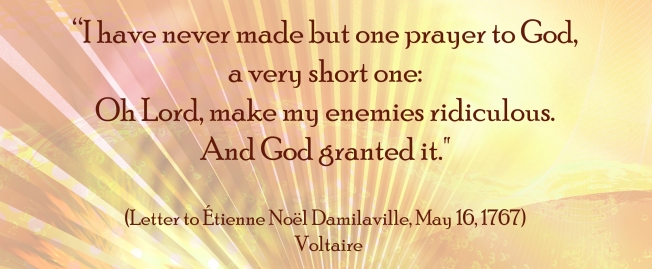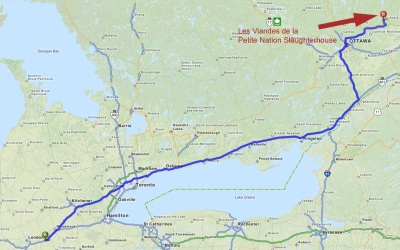 Written By: Heather Clemenceau
Written By: Heather Clemenceau
After a night of careful deliberation and a rigorous boxing match between each direction of my moral compass, I’ve finally decided to write about this issue. I’ve written about Alberta a few times before – Canadian slaughterphile and HWAC Chair Bill DesBarres, the Calgary Stampede, and our anti-slaughter billboard have featured predominantly in the past. DesBarres is also the paid public representative of Claude Bouvry – the owner of Bouvry Exports. Horse slaughter seems to be almost an entrenched tradition in Alberta, with Bouvry’s two plants and the Stampede setting the tone for institutionalized animal abuse and neglect.
Fort McLeod is the capital of horse slaughter in Canada. In their white paper “Horse Slaughter – Its Ethical Impact and Subsequent Response of the Veterinary Profession,” the U.S.-based group Veterinarians for Equine Welfare denounces horse slaughter as inhumane and
“an unacceptable way to end a horse’s life under any circumstance.”
The organization also warns against the practice because of the wide assortment of drugs that are prohibited from use in animals “intended” for human consumption, but are given to horses and likely to be present in their flesh after slaughter. The group also outlines its “strong position” that due to these medications,
“…horsemeat derived from any US [or Canadian] horse can never be regarded as safe for human consumption.”![horseshoes]()
The various feedlots nearby and the Bouvry slaughter plant were part of an investigation by Animals Angels in October 2012; you can read the full report here. There is also additional footage of the various Alberta feedlots by the Canadian Horse Defence Coalition as part of “The True Faces of Horse Slaughter” investigation.
Another staple in Alberta is the television show “Heartland,” a family series based on the Heartland books by Lauren Brooke. The series chronicles the highs and lows of ranch life and it is filmed in Alberta – feedlot capital of Canada. The Facebook page is filled with perpetually optimistic fans pleading for better love lives for the characters, and it’s a place where “True Heartlanders” are never bored with reruns. As far as I know, the closest this series has come to treading on the topic of slaughter is an episode where a dozen wild horses are found in a “feedlot,” which the scriptwriters tell us is a “place where they keep cows before they kill them.” I’m wondering if the producers have ever seen a real feedlot, where thousands upon thousands of horses are waiting to be slaughtered, not a dozen. They’re not difficult to find in Alberta! But realistically, that’s just too much reality for a family show….
A few days ago the television show became embroiled in something of a scandal – it’s the only time I ever saw harsh words exchanged on that Facebook page. And it was reserved for horse welfare advocates after several individuals recognized one of the trailers photographed at the Bouvry slaughterhouse as belonging to a well-known contractor and animal wrangler for the show. John Scott Productions supplies horses for this show and others, as well as sets, props, wagons and buggies.
It’s a working ranch with over 100 horses, as well as buffalo and longhorns, according to their website. Although the Animals’ Angels investigation took place in October, the connection wasn’t made until recently and then the Heartland producers were forced to deal with the reality of the incriminating photos and investigation posted on their Facebook wall. While some threads were left up, others and comments were quickly deleted. Finally, it seemed as though the people handling their social media accounts decided that the appropriate response was to cease the heavy-handed deleting and give the impression that the situation was being addressed.
As you can see from the Animals’ Angels investigation, two of John Scott’s trailers were tagged at Bouvry’s on October 18th.
“10/18/12 - Investigators arrived at 7:30 am.
The parking lot was already crowded. Two pickup trucks with stock trailers were parked at the unloading ramp. At 7:46 am, they both left and investigators followed. On the back of the trailers was written: Movie Horses –John Scott – Longview, Alberta. “

Scott Productions Trailers photographed by Animals’ Angels investigators immediately after leaving the Bouvry plant
Fans of the show were simultaneously shocked and/or in denial about the possibility that horses were taken to slaughter. It’s an awkward situation for the producers of the show because the show’s entire premise is based on rescuing horses as an homage to the main character’s deceased mother. Even though they cannot control what their contractors do outside of their business relationship with the show, it presents as an extreme conflict. And it’s largely an unresolved conflict, at least to me and a few others, because we’ll never truly know which animals were taken to the plant on that day.
“John’s horses are not abused.”
“Heartland is not going to stop working with him – he’s the only movie wrangler around.”
Because the investigators arrived at the plant at 7:30, the Scott trailers had already been unloaded. The show posted a status on Facebook to indicate that these were buffalo that had been dropped off, which isn’t inconsistent since buffalo are present on the ranch according to the website. But it gets interesting because the investigators have stated that the buffalo seen in the pens at Bouvry wer e there THE DAY BEFORE as well as on the same day that Scott’s trailers were photographed – October 18th. There was also some speculation as to whether the two trailers, small stock trailers, were large enough to haul buffalo. Were these also Scott’s buffalo? Who knows. Bouvry doesn’t slaughter buffalo every day.
e there THE DAY BEFORE as well as on the same day that Scott’s trailers were photographed – October 18th. There was also some speculation as to whether the two trailers, small stock trailers, were large enough to haul buffalo. Were these also Scott’s buffalo? Who knows. Bouvry doesn’t slaughter buffalo every day.
The producers maintain that the entire shipment was a herd of buffalo, and not horses. Apparently there is a manifest that supports their statement. I will say that, if these two trailers represent several head of buffalo, they must have been very tiny indeed. The producers stipulate that:
“No horse that has appeared on Heartland has ever been sent to a slaughterhouse. Mr. Scott invites visitors and fans of the show alike to stop by his ranch and see how well his horses are cared for. John takes pride in the way his operation trains and cares for his horses, as this has been a lifelong passion for him. Mr. Scott personally owns the horses that play Spartan, Paint, Pegasus, Harley as well as much of the equines appearing on the series.”
Crisis averted? Perhaps not. It may be absolutely true that none of the Heartland horse actors have ever been sent to slaughter, and no one accused Scott or his company of abusing animals. It doesn’t guarantee however, that none of their supplier’s horses have never been shipped to Bouvry; as we know, healthy, young, viable and trained horses also get sent to slaughter and most of them aren’t abused beforehand either. HWAC Chair Bill DesBarres, like a sausage forever sputtering in its own grease, will be the first person to proclaim that he cares about his horses as well. He’ll also tell you that he sends each and every horse that is of no use to him directly to slaughter, because “it’s a wonderful option,“ while simultaneously and inexplicably describing humane euthanasia as an “awful experience.”
 This entire situation is interesting because it addresses the need for or the appropriateness of industry accountability and governance. While I personally object to talking heads attempting to direct off-work activities and morals, there is a great need for the horse industry to improve its image and more importantly, share their ideas on what can be done to improve horse welfare. The racing industry for the most part has tried very hard to improve its image and necessitate aftercare for former racehorses. Many employers require a minimal degree of off-work behavioural compliance with permits and laws, and may stipulate that employees must “govern themselves accordingly” outside of work and not attract negative attention to their employers. What can be required of 3rd party contractors is another matter entirely. In the end, the producers quickly squelched the possibility of further discussion, primarily because they are approaching their 100th episode:
This entire situation is interesting because it addresses the need for or the appropriateness of industry accountability and governance. While I personally object to talking heads attempting to direct off-work activities and morals, there is a great need for the horse industry to improve its image and more importantly, share their ideas on what can be done to improve horse welfare. The racing industry for the most part has tried very hard to improve its image and necessitate aftercare for former racehorses. Many employers require a minimal degree of off-work behavioural compliance with permits and laws, and may stipulate that employees must “govern themselves accordingly” outside of work and not attract negative attention to their employers. What can be required of 3rd party contractors is another matter entirely. In the end, the producers quickly squelched the possibility of further discussion, primarily because they are approaching their 100th episode:
“There are 10s of thousands of fans who are unaware of any of this and there is no reason to make this a key post on the blog. We have a 100th episode to promote this Sunday. :-)”
Yes, it’s transparently clear where their priorities lie, although truthfully, I can’t really blame them under the circumstances. But I seriously think the show must address the issue of slaughter in an episode, perhaps in a manner more consistent with the original book. I think it can be handled sensitively in a manner appropriate to their audience. Another issue the show management should address is the mysterious phone call placed to a horse advocate from “Alberta Klondike Productions,” seeking contact information for posters on the Heartland Facebook page.
I sincerely hope that the statements of the TV producers are not part of a campaign of self-deception, intended to conceal a possible ethical breach in killing animals whilst purporting to save them in a television show. I hope that Mr. Scott does not send horses to slaughter – any horses, not just the ones performing on this show. The reality is that we do not know what species of animal was unloaded that day in Fort McLeod as the investigators did not see them.
 Slaughterhouse operations violate nearly every principle of the humane treatment of animal ownership. Unfortunately, the leadership within the horse industry has grown to lack empathy and compassion for horses that do not meet their expectations. Horses do not understand why their colour matters, that they are not the correct size or shape, nor do they contemplate their appearance in a television show. In the unfortunate circumstance that a horse’s life does indeed need to be ended, it should be done as humanely as possible by humane euthanasia.
Slaughterhouse operations violate nearly every principle of the humane treatment of animal ownership. Unfortunately, the leadership within the horse industry has grown to lack empathy and compassion for horses that do not meet their expectations. Horses do not understand why their colour matters, that they are not the correct size or shape, nor do they contemplate their appearance in a television show. In the unfortunate circumstance that a horse’s life does indeed need to be ended, it should be done as humanely as possible by humane euthanasia.













































































































